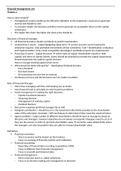Class notes
Lecture notes Financial Management 214
- Course
- Financial Management 214
- Institution
- Stellenbosch University (SUN)
In depth Financial Management 214 lecture notes including step by step examples. The ntes cover all aspects of the important and relevant information for the module.
[Show more]



